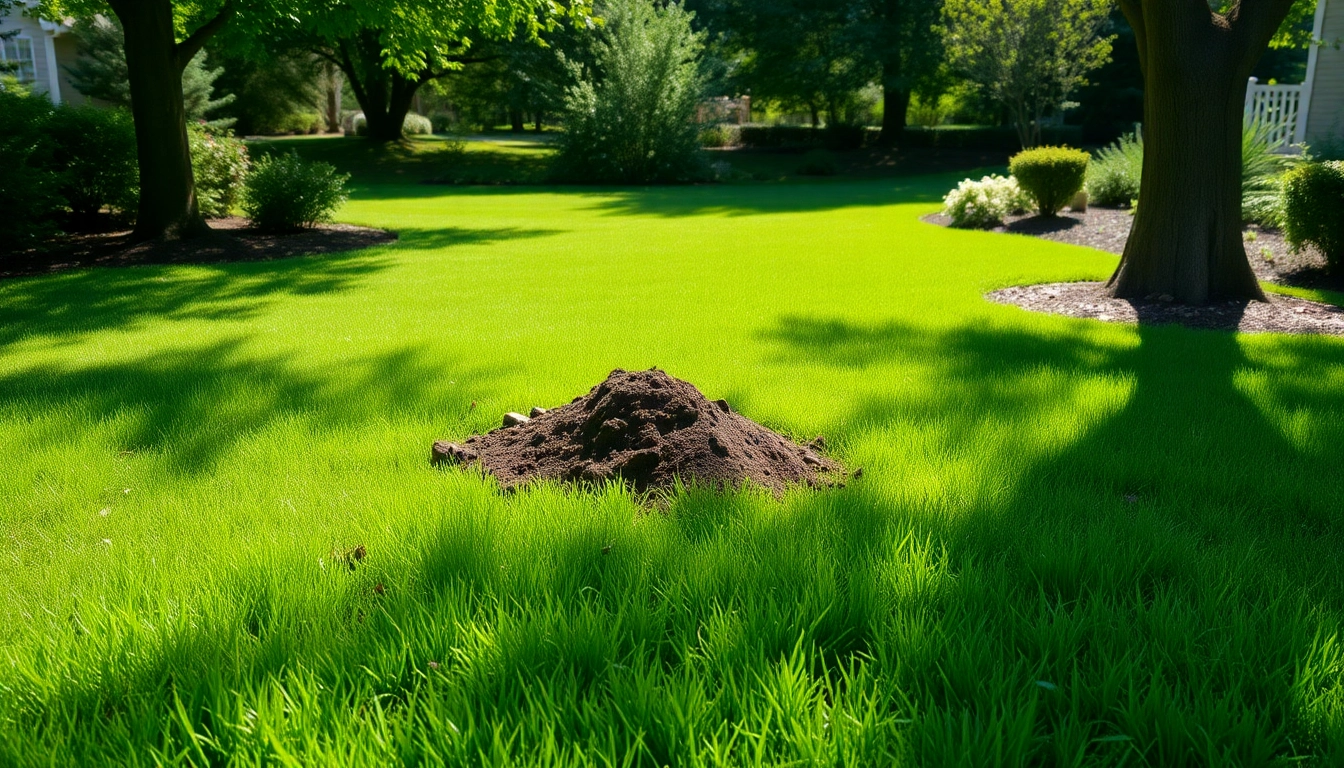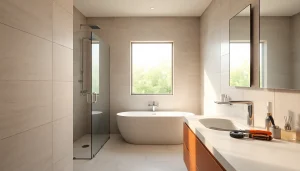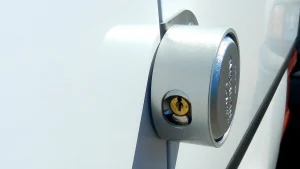Effortless Lawn Top Dressing Techniques for a Healthier, Lusher Lawn

Understanding Lawn Top Dressing
Lawn top dressing is a vital practice in maintaining a healthy and lush lawn. It involves spreading a thin layer of nutrient-rich material over the grass, significantly enhancing its health and appearance. This simple process can lead to a healthier, more resilient lawn when done correctly. In this comprehensive guide, we will delve deeply into the nuances of lawn top dressing, exploring its benefits, techniques, and best practices.
What is Lawn Top Dressing?
Lawn top dressing is the application of a thin layer of soil, compost, or other organic material to the surface of a lawn. Typically, this layer is about 1/4 to 1/2 inch thick. The primary purpose is to improve the soil quality beneath the grass, support healthy growth, and address various lawn issues such as unevenness, soil compaction, and nutrient deficiencies.
This practice can be performed on both established lawns and new sod installations. Top dressing complements other lawn care techniques like aeration and overseeding, creating an environment conducive to optimal turf health.
Benefits of Lawn Top Dressing
The advantages of lawn top dressing extend far beyond surface aesthetics. Here are some of the principal benefits:
- Enhanced Soil Quality: Top dressing improves soil structure, making it more conducive to root growth. It introduces vital nutrients and beneficial microorganisms that support overall lawn health.
- Improved Drainage: A well-mixed top dressing can enhance water retention in sandy soils while improving drainage in clay-heavy areas, facilitating healthy root development.
- Leveling Uneven Areas: Top dressing can effectively fill in low spots in your lawn, producing a smoother, more even surface that enhances the lawn’s appearance and makes mowing easier.
- Reduction in Soil Compaction: Regular application can help alleviate compacted soil conditions, allowing better air, water, and nutrient infiltration.
Common Materials Used for Top Dressing
Choosing the right material for top dressing is crucial to the effectiveness of the process. The most commonly used materials include:
- Compost: Rich in nutrients, compost is a popular choice as it not only feeds the grass but also improves soil structure and water retention.
- Topsoil: Utilizing a quality topsoil blend provides a solid base for new grass growth and helps fill in uneven patches.
- Sand: Often used in combination with loam or topsoil, sand can improve drainage, especially in heavy soils.
- Organic Mulches: Materials like straw or shredded leaves can help suppress weeds and retain moisture while enhancing soil fertility as they decompose.
When to Perform Lawn Top Dressing
Best Seasons for Top Dressing Your Lawn
Timing is key for effective lawn top dressing. The optimal seasons typically depend on your climate zone:
- Spring: As the growing season begins, top dressing during spring helps with nutrient supply and promotes vigorous growth.
- Fall: Applying top dressing in fall can prepare your lawn for winter, allowing it to recover and strengthen before the colder months.
Avoid top dressing during extreme temperatures or when the lawn is dormant, as this can cause unnecessary stress.
Signs Your Lawn Needs Top Dressing
A healthy lawn demonstrates telltale signs that indicate the need for top dressing. Look for:
- Uneven surfaces with dips or low areas.
- Thin patches where grass struggles to thrive.
- Compact, hard soil that resists moisture.
- Grasses showing signs of nutrient deficiency, like yellowing leaves.
If you observe any of these signs, it may be time to top dress.
How Often Should You Top Dress?
The frequency of top dressing depends on various factors such as lawn type, age, and overall condition. Generally, it is recommended to perform top dressing:
- Once a year for a healthy lawn.
- Twice a year for lawns that show signs of stress or have heavy foot traffic.
- Proactively after aeration for severely compacted soils.
Over time, establishing a regular schedule can optimize your lawn’s health and vitality.
How to Top Dress Your Lawn
Tools and Equipment Needed
Before beginning the top dressing process, gather the necessary tools and equipment:
- Top Dressing Material: Choose your preferred blend, such as compost or a mix of topsoil and sand.
- Fertilizer (optional): For additional nutrients, consider applying a balanced fertilizer alongside top dressing.
- Spreader: A drop spreader or shovel helps distribute the material evenly across the lawn.
- Rake: To level and smooth the top dressing material after application.
- Watering Equipment: To ensure the material settles properly and encourages new growth.
Step-by-Step Top Dressing Guide
Follow these steps to achieve effective top dressing:
- Mow Your Lawn: Start by mowing your lawn to a shorter height, allowing the top dressing material to contact the soil more effectively.
- Aerate if Necessary: If soil compaction is present, aerating the lawn beforehand will enhance the effectiveness of the top dressing.
- Apply Top Dressing: Using your chosen spreader, apply the top dressing evenly over the entire lawn, focusing on areas that need special attention.
- Rake the Surface: After applying the material, use a rake to level the top dressing to ensure even coverage and avoid excessive buildup on the grass.
- Water the Lawn: Give your lawn a thorough watering immediately after top dressing to help the material settle and encourage grass to grow through.
Maintaining Your Lawn Post-Top Dressing
After top dressing, follow these maintenance practices:
- Monitor Moisture Levels: Keep the soil consistently moist, especially during dry spells, to promote healthy regrowth.
- Limit Foot Traffic: Avoid heavy foot traffic for a few weeks to allow the lawn to recover.
- Evaluate Mowing Schedule: Wait until grass has established itself through the top dressing material before mowing.
Choosing the Right Mix for Lawn Top Dressing
Creating a Custom Top Dressing Mix
For the best results, you might choose to create your own top dressing mix suitable for your lawn’s specific needs. A common recipe includes:
- 3 Parts Sand
- 6 Parts Quality Topsoil
- 1 Part Compost
This combination improves drainage and moisture retention while providing essential nutrients.
Purchasing Top Dressing Materials
If creating your own mix is not feasible, purchasing pre-made top dressing materials is a convenient alternative. Many garden centers and landscaping suppliers offer top dressing products specifically designed for various lawn types. Ensure that you choose high-quality, organic materials devoid of weed seeds and contaminants.
Mixing Techniques for Optimal Results
To achieve a well-blended top dressing mix:
- Use a Concrete Mixer: For larger quantities, a concrete mixer ensures a thorough blend.
- Add Water Gradually: If the mixture seems too dry, add water incrementally until achieving a damp consistency.
- Test Consistency: Grab a handful of the mix; it should hold together without being too wet or crumbly.
FAQs About Lawn Top Dressing
What is The Best Thing to Top Dress Your Lawn With?
While compost is highly recommended due to its nutrient-rich profile, other suitable materials may include a blend of topsoil and sand or organic mulches, depending on your lawn’s specific needs and soil composition.
Is Top Dressing Necessary When Overseeding?
Yes, top dressing is beneficial when overseeding, as it enhances seed-to-soil contact, provides additional nutrients for germination, and helps retain moisture, leading to higher success rates for new grass seed.
Can You Top Dress with Topsoil?
Absolutely! Topsoil is a common top dressing material. Ensure you use a quality, weed-free topsoil blend to avoid introducing pests or weeds into your lawn.





